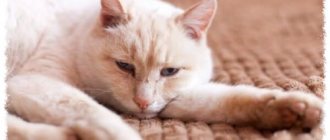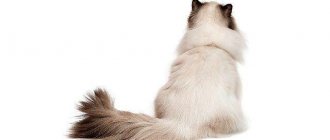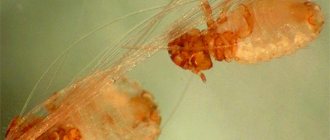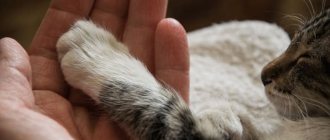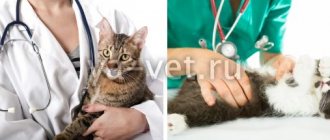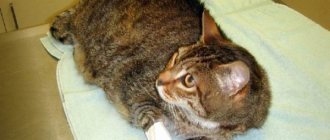It is no secret that purebred animals often suffer from hereditary diseases. Selective selection in order to consolidate certain human-needed qualities in a breed is costly for our pets. One of the most common hereditary anomalies is articular dysplasia in cats. This disease significantly limits the animal's mobility. It appears more often in infancy and progresses as quickly as the kitten gains weight. Cats of large breeds - Maine Coon, British, Persians - especially suffer from the disease. According to the International Orthopedic Foundation for Animals (IFAW), the average incidence of this disease among cats is 6.6%.
What is joint dysplasia
Dysplasia of the shoulder, hip, and elbow joints is one of the most complex pathologies of the musculoskeletal system. It is characterized by displacement, deformation, change in shape and a further decrease in mobility, complete loss of functionality of the joint.
Important! From Greek, dysplasia is translated as “underdevelopment”, and from Latin – “improper development”. The end parts of bone structures do not have normal articulation, which leads to dislocations, curvature of the limbs, fractures, and osteoarthritis.
Degenerative changes in freely moving joints lead to loss of mobility over time. The danger of the pathology lies in the fact that the symptoms of joint dysplasia in cats do not appear immediately, remaining unnoticed for a long time.
Congenital and acquired dysplasia
Cats have congenital and acquired joint dysplasia. Despite the fact that the causes of the disease are not fully understood, in most cases this pathology is hereditary in animals and manifests itself in embryogenesis (the process of fetal formation).
Important! According to veterinarians and felinologists, dysplasia in domestic animals is caused by certain “dysplasia” genes. If at least one of the parents had dysplasia, in 80-90% of cases the disease is transmitted to kittens. It was found that dysplasia can appear even after several generations.
The development of acquired dysplasia is promoted by various causes. In addition to the fact that with age, as the animal matures, the joints wear out, there are a number of factors that increase the manifestation of pathology. Congenital dysplasia most often appears in cats aged 6-10 years.
Possible complications
Without treatment, minor changes may go unnoticed quite unnoticeably, but not without consequences. In the period from 25 to 55 years, a patient with the diagnosis in question has a significantly increased risk of dysplastic type coxarthrosis, the primary symptoms of which begin to appear against the background of a significant decrease in motor activity.
The key features of such an unpleasant complication are considered to be the acute initial phase and the intensity of progression. The pathology manifests itself not only as unpleasant sensations localized in a certain part of the musculoskeletal system, but also as pain, as well as a significant limitation in the mobility of the limb.
Unreduced congenital dislocation of the hip over time can cause the formation of a new, defective joint, in addition to which shortening of the limb and disruption of the muscular frame can be observed.
The main causes of dysplasia in cats
As already noted, joint dysplasia in cats is most often caused by breed and genetic predisposition. But there are other factors that contribute to the development of this pathology.
Causes of dysplasia in cats:
- unbalanced, monotonous diet (feeding cats exclusively with meat, low-quality dry food, excess protein, phosphorus in food);
- obesity, overweight, diabetes;
- endocrine pathologies;
- age-related changes in the body;
- metabolic disorder;
- intrauterine growth retardation;
- injuries of the limbs, spine;
- rapid growth with large animal sizes;
- severe bruises, injuries to the musculoskeletal system;
- hypovitaminosis (calcium deficiency);
- hormonal imbalance;
- congenital pathologies of the musculoskeletal system;
- rickets, flattened chest;
- injuries, severe bruises, damage to the sternum;
- physical inactivity, lack of physical activity.
Sterilized, neutered cats and female cats are at risk. This is especially true for those animals that were sterilized at an early age. If the operation is performed before the end of full development, puberty, the so-called growth zones close, which entails degenerative changes and joint deformation.
Important! The development of musculoskeletal pathology is facilitated by improper care and poor living conditions.
The main types of joint dysplasia in cats
Dysplasia, as many mistakenly believe, affects not only bone tissue, but also joints. The main types of joint dysplasia in cats:
- Hip joints. With this pathology, the articular head of the femur and the socket of the pelvic bone of the hind limbs are affected.
- Elbow, shoulder, wrist joint. The disease is characterized by curvature of the forelimbs.
Most often, veterinarians diagnose hip, carpal, and elbow dysplasia in cats.
Hip and hind limb dysplasia in cats
Hip and hind limb dysplasia in cats (HLD) is a pathology of the musculoskeletal system that occurs due to abnormal tissue development. It is characterized by a violation of the formation of the structure of the joint, a change in its shape, and gradual destruction. The acetabulum, where the joint is located, becomes flat over time. The bone is weakly fixed in the joint. The effect of permanent subluxation develops.
Important! Normally, in the joint, the head of the femur coincides with the acetabulum, which ensures its smooth operation. In place, the joints help hold the large muscle structures of the thigh in place so they can function normally.
There are 4 stages of development in the development of pathology:
- The first (mild form). The acetabulum becomes flattened, while the bone in it is held relatively firmly.
- Medium form (stage 2). Degenerative processes are insignificant, the pathology is mild. There are noticeable irregularities on the head of the bone, and the articulation weakens.
- Stages three and four (severe form). The acetabulum is greatly flattened, the head of the bone is destroyed, the joint is deformed, and is in a state of subluxation or dislocation.
- Extremely severe. Complete destruction of the joints occurs. The pathology is irreversible.
Important! Considering that the pathology is inherited in animals, only cats with the first and second forms of dysplasia are allowed for breeding.
Symptoms and clinical manifestations of THD depend on the form and severity of the pathological degenerative process.
In most cats, symptoms of hip dysplasia do not appear until adulthood. Moreover, in large, large breeds of cats, the clinical picture may appear at 3-5 years.
THA is fraught with serious complications and can cause deformation of the pelvis, hind limbs, arthrosis of the hip joint, subluxation, and dislocation of the hip.
Elbow and shoulder dysplasia
Dysplasia of the elbow and shoulder joint is a degenerative pathology, which is characterized by abnormalities in the development of joints in animals of varying degrees. The disease in most cases leads to lameness of the forelimbs. It has five stages of development. Asymptomatic progression of the disease is possible only at the initial stage of the disease.
As a rule, the pathology simultaneously affects two elbow and shoulder joints. The first clinical manifestations in cats can be noticed starting from 5-6 months of age.
Treatment prognosis
Timely and high-quality treatment of pathological changes implies positive prognoses.
The absence or insufficiency of treatment, deviation from the course determined by the attending physician, or refusal of therapeutic procedures can lead to serious consequences, including the development of severe deforming arthrosis.
There are cases when patients with dysplasia live without knowing they have the disease. In a situation where pathology is detected by chance during an X-ray examination, it is important to ensure constant monitoring by an orthopedist (at least once a year).
In order to preserve the quality of life, it is recommended to conduct timely preventive examinations of all newborns, as well as to implement complete and timely treatment of the identified disease.
Symptoms and first signs of dysplasia in cats
In order to identify pathologies in a timely manner, owners of cats, especially genetically predisposed breeds, should know how joint dysplasia manifests itself in pets.
Important! Only a qualified veterinarian can determine the pathology after conducting a comprehensive diagnosis.
Symptoms and first signs of dysplasia in cats:
- unsteady gait, periodic or constant lameness;
- decreased activity;
- falling on one side when walking;
- fatigue after short periods of activity;
- muscle weakness due to gradual muscle atrophy, degenerative changes in muscle tissue;
- valgus (X-shaped) curvature of the front and hind legs;
- crunching when working a joint or bones;
- drowsiness, lethargy, apathy;
- weakness of the limbs affected by dysplasia.
In cats with dysplasia, movements are sharp. At the beginning of the development of the pathology, the pet limps. Over time, lameness becomes more pronounced, like other symptoms.
The animal experiences pain and discomfort when walking or moving due to inflammatory processes in the joints. Refuses active games. Trying not to jump onto a hill. Cats have a hard time getting up after resting. Palpation of damaged joints is accompanied by acute pain.
In older animals with THD, the hind limbs are twisted and skinny due to the degradation of muscle tissue.
Videos and Illustrations
Hip dysplasia. Treatment methods
Elbow dysplasia. Modern treatment methods
Dysplasia is a pathological condition of the joints that affects the quality of movement of cats. In most cases, the disease affects the hip joint; much less frequently, the deformity affects the wrist and elbow joints. Dysplasia in cats is a dangerous pathology that can significantly worsen their quality of life, as animals lose the ability to fully move.
Breed predisposition to dysplasia
As we have already noted, joint dysplasia is most often caused genetically and is inherited.
Pedigree predispositions are noted in the following breeds and their crosses :
- Maine Coon;
- British;
- Scottish Fold (Scottish Fold);
- Norwegian forest;
- Burmese cat breed;
- Devon Rex;
- chartreuse;
- Siamese;
- exotic shorthair;
- Persians and their crosses.
Congenital hereditary dysplasia of the joints is noted in large, fast-growing high-breed individuals. Pathology in cats can appear after 10-14 generations. Therefore, when purchasing a kitten from the list of the above breeds, carefully study its pedigree.
Interesting! In outbred cats, dysplasia most often has an acquired nature.
Causes of the disease
The main cause of the disease is hereditary predisposition. The disease is transmitted to the kitten from one of the parents. They say that the mutation that causes symptoms of dysplasia can manifest itself after 14 generations, so before mating you need to very carefully study the pedigree of the animal.
Genetic studies have shown that there is no specific gene responsible for the presence or absence of this disease. The cause of the disease is hidden disturbances in the number or structure of chromosomes that arise during the fertilization stage. Such violations always lead to deviations in the functioning of various organs and systems. That is why more and more genetic abnormalities and hereditary diseases of cats are being identified, characteristic of some specific breeds or groups of breeds.
Provoking factors
DTHD can be provoked by a whole complex of various predisposing factors, the main of which is the significant weight of the animal and its rapid growth. That is why Maine Coon cats, which are the largest cats, are more susceptible to the disease than other cat breeds. According to research by the International Orthopedic Foundation for Animals, the incidence of dysplasia among individuals of this breed is 18-25%.
And yet there are several more breeds that are most susceptible to this disease:
- British;
- Persian;
- exotic;
- Siamese;
- Scottish Fold (Scottish Fold).
Among other provoking factors, the most important are:
- obesity;
- various bone diseases;
- consequences of previous injuries;
- early sterilization of the animal, which promotes weight gain;
- incorrectly composed diet, excessively rich in calories;
- physical inactivity.
There is a hypothesis that dysplasia can be triggered by insufficient hyaluronic acid in the synovial fluid, which serves as a lubricant for joints.
Tests and methods for diagnosing dysplasia in animals
Considering that the disease manifests itself in cats in adulthood, joint damage can only be identified through complex tests and a number of diagnostic studies.
Tests and methods for diagnosing dysplasia:
- Palpation, external examination of the joints. Allows you to determine pain, swelling, crunching when bending the limbs.
- Radiography.
- Serological studies (general, biochemical blood and urine tests).
- Arthroscopy.
Dysplasia test
A test for dysplasia of the hip, elbow, and wrist joints is carried out in veterinary clinics using digital radiography. The procedure is carried out under general anesthesia using muscle relaxants to completely relax the muscles and immobilize the animal. Therefore, at the time of the study, the cat must be clinically healthy.
Important! Please note that X-rays are not performed on cats under two years of age.
Arthroscopy is performed to assess the inner surface of the joints, intra-articular structures, and the degree of development of pathology. The procedure is carried out through a puncture and the veterinarian introduces an arthroscope drug.
X-ray of the joint
A joint x-ray involves a series of x-rays. Diagnostics makes it clear how displaced the joint is and determines the presence of concomitant diseases.
Diagnostics
One of the surest signs of diagnosis is radiographic examination. It helps to fully determine the severity of the pathology and the presence of complications. X-rays will also help differentiate dysplasia from dislocation, trauma, arthrosis or arthritis.
In the early stages, the changes are extremely small, but with an experienced doctor it is possible to diagnose them and successfully treat them without surgery.
A full examination is required, including palpation of the joints and assessment of their mobility, the presence or absence of pain and crepitus.
Arthroscopy is used to diagnose changes in the joint and cartilage tissue. This is a mini-operation that allows tissue to be assessed through a puncture. Recommended for identifying early stages, it is also possible to remove accumulated fluid and parts of destroyed cartilage.
Also, to assess the general condition, a general blood test, urine test, electrolyte levels and blood biochemistry are collected.
Therapy for dysplasia depends on the degree of development of the pathology. At the initial stages, the cat's movement is limited. To do this, she is placed in a cage for several weeks. The affected limbs are then firmly immobilized, reducing the impact on the joint.
The diet must be adjusted. Products rich in fish oil are introduced into the pet’s diet, the amount of animal fat is limited and the menu is balanced according to the content of microelements. It is recommended to introduce a diet containing glucosamine and chondroitin.
If there is a history of obesity or excess weight, then dietary foods are used to correct weight.
Make your cat's life easier - try to put the tray, bowl and bedding in accessible places. Remove obstacles and help the cat get to high surfaces (special steps, manholes, etc.).
Physiotherapy is also useful in the initial stages. For this purpose, massage, heating, and electrophoresis are used. It is important to remember that with clinical manifestations of dysplasia (pain and lameness), they are completely contraindicated.
In severe stages, maintenance drug therapy is prescribed. It includes the administration of painkillers, non-steroidal anti-inflammatory drugs, as well as vitamins and minerals.
Medicines are not prescribed without first fixing the joint. Medicines relieve discomfort in the joint, and the cat begins to fully rely on the damaged limb, which only aggravates the course of the disease and ends in arthrosis.
In severe cases, surgery is inevitable. It helps stop the progression of the disease, remove discomfort when moving and return normal physical activity.
There are several types of operations:
- Prosthetics – helps to recreate the normal structure of the joint using artificial materials. There is endoprosthetics - installation of a joint prosthesis.
- Correction of the femoral adductor muscle - usually used for kittens up to 12 months, helps to reduce the thickening of the muscle and thereby bring the joint back to physiological norm.
- Formation of the joint with fixation using a special device or metal structure.
- Resection of the head of the bone - indicated for destruction of the joint; during this surgical intervention, the head of the femur is sawed off and a “false” joint is formed due to artificial imitation of ligament muscle bundles. Subsequently, cartilage forms there, which allows the cat to move normally.
The operation is selected individually for each animal, depending on the characteristics of the cat and the course of the disease. The decision is made only by a doctor who can assess the risks and predict the outcome of surgery.
Treatment of joint dysplasia in cats
Treatment for joint dysplasia in cats is determined by a veterinarian. The choice of methods depends on the degree of damage to the joints, age, individual and breed characteristics of the cat.
Treatment methods include:
- Drug therapy with the use of chondroprotectors, chondronutraceuticals that promote the restoration of cartilage tissue. Medicines are prescribed in tablets, injection solutions, gels, ointments.
- Physiotherapy techniques (ultrasound, electrical stimulation, electrophoresis). Prescribed during remission.
- Acupuncture, Homeopuncture.
- Surgical, operative treatment.
In case of joint dysplasia, the diet is adjusted. Cats can be prescribed special fortified, medicinal industrial food.
Surgical intervention
Veterinarians use surgical intervention in cases of severe clinical symptoms, at stages 3-4 of the pathology.
Surgical treatment for dysplasia:
- Triple pelvic osteotomy. Surgery using a special supporting metal structure is prescribed to young animals that have preserved elasticity, strength of ligaments, and no progressive degenerative processes in the affected joint.
- Pectinectomy. The technique is aimed at correcting the adductor muscle of the thigh. A good result is noted if the operation is performed on a kitten up to 12-14 months old.
- Joint endoprosthetics. Prescribed to cats from 10-11 months of age. With this technique, the affected joint is replaced with a ceramic, metal prosthesis.
- Intertrochanteric osteotomy. The operation is indicated for diagnosing traumatic subluxations in animals.
- Resection arthroplasty. With this technique, a false joint is formed in the place where the head of the bone is located. The role of the ligamentous apparatus is performed by connective tissue, which fills the free space.
Important! Surgery for dysplasia is prescribed only to young animals. For older cats, only conservative treatment and maintenance therapy are indicated.
The operation gives a chance for recovery and a normal, full life, especially with prosthetics. The prognosis is generally favorable. For a faster recovery, cats need special post-operative care.
Treatment at home
Treatment at home involves following all the instructions of the treating veterinarian. Owners must adhere to the therapeutic diet prescribed to the cat, monitor the pet’s condition, and administer medications in a timely manner.
During the recovery period, it is important to monitor the pet’s activity, behavior, and condition.
Symptoms
Age-related changes appear in growing pets. For example, elbow deformity develops within six months and is immediately accompanied by symptoms.
Signs of the disease depend on the severity of the pathology:
- the appearance of an unsteady gait;
- the cat stops jumping on high surfaces;
- kittens develop lameness (at first - when the pet lies in one position for a long time, as the pathology progresses - the symptom becomes permanent);
- the paws become bent and become X-shaped;
- a frisky cat stops moving quickly;
- muscles begin to atrophy, accompanied by weakness of the paws and weight loss of the pet;
- thickening at the bends of the limbs;
- the cat cannot sit in the “Egyptian” pose;
- when the pet lies on its stomach, spreads its paws to the sides;
- A crunching sound can be heard when the cat moves.
If the initial stage of the disease is not treated and osteoarthritis begins, the pet begins to move with great difficulty or completely loses the ability to walk independently.
List of medications for dysplasia
In conservative therapy, medications are used to relieve symptoms and normalize the cat’s condition.
List of medications:
- Stride plus.
- Arthroglycan.
- Akti-Vet.
- Chionat.
- Discus Compositum.
- Hondraton.
- Rimadyl.
- Ketofen.
- Stop arthritis.
- Bonharen.
- Previcox.
- Target.
Additionally, intra-articular injections based on hyaluronic acid are used in treatment. Non-steroidal medications, anti-inflammatory, painkillers (Traumel), symptomatic medications, vitamins, mineral complexes, and alternative medicine may be prescribed.
Important! All medications, course of treatment, dosages should be prescribed only by verinar.
Consequences of the disease
Considering that dysplasia is most often diagnosed at later stages of development, this pathology causes complications. The consequences of the disease depend on the treatment method and the degree of development of the pathocess.
Conservative treatment alleviates the condition of animals, but does not guarantee complete healing. In some cases, the animal is prescribed lifelong therapy. The prognosis is favorable only after prosthetics.
The sooner the disease is detected, the greater the chance that the pet will return to a full, happy life. On average, it takes 3 to 6 months for a cat to recover.
Measures to prevent dysplasia in cats
Joint dysplasia is a serious, slowly developing disease of the musculoskeletal system. Treatment is complex, complex, and expensive, so it is easier to provide and prevent the development of the disease.
Prevention measures include:
- Balanced diet.
- Monitoring the growth and development of the kitten.
- Scheduled visit to the veterinary clinic.
- Controlling your cat's weight.
- Correction of rickets.
- Adjusting your activity level.
- Supplementing the diet with mineral and vitamin supplements.
Important! Do not allow individuals who suffer from joint dysplasia to breed.
If your pet is predisposed to dysplasia, be sure to give him supplements to improve the condition of blood vessels (Kosekin, Felvit chondro). The line of well-known brands includes special food for animals prone to problems with the musculoskeletal system.




